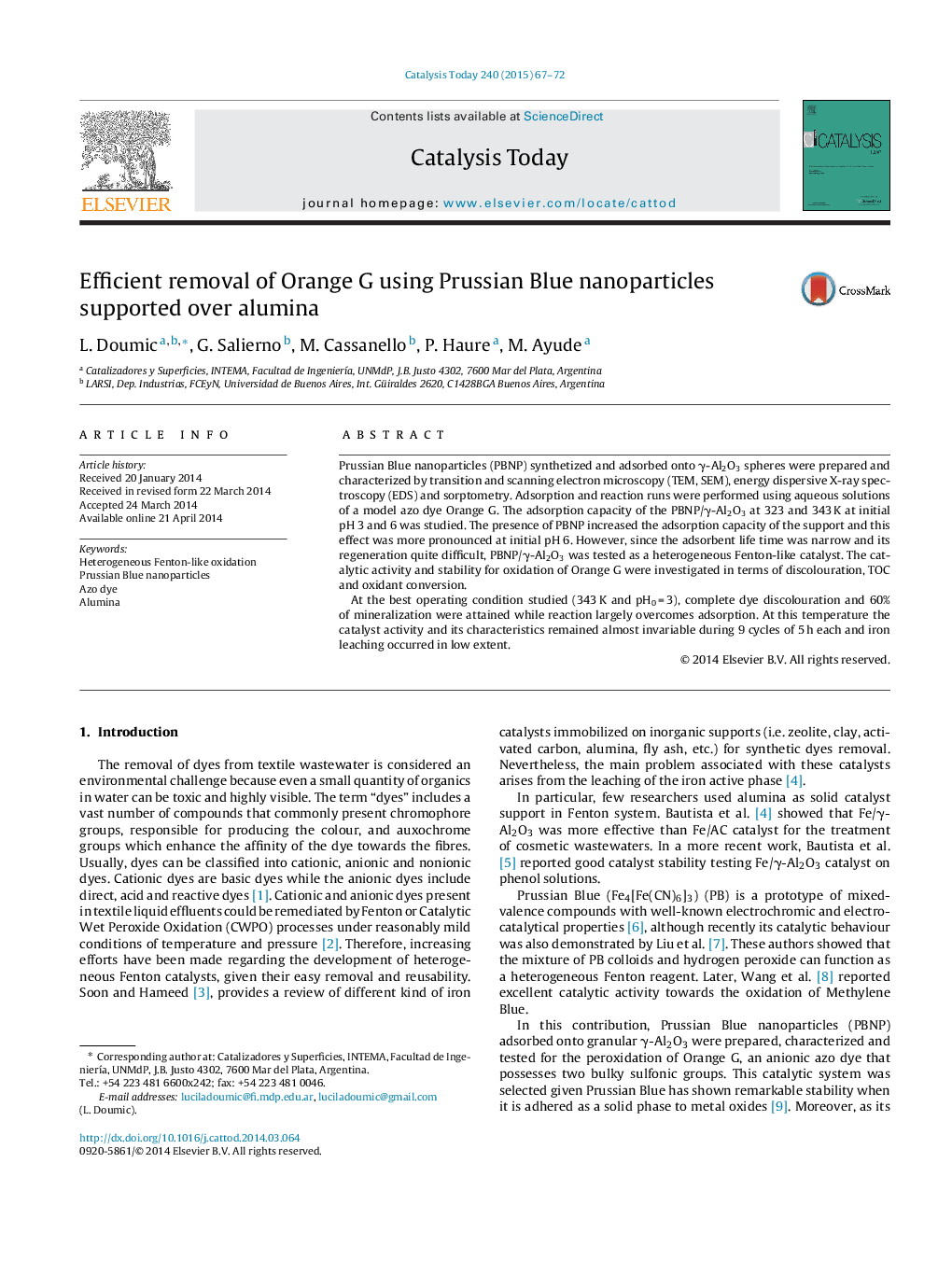| Article ID | Journal | Published Year | Pages | File Type |
|---|---|---|---|---|
| 54429 | Catalysis Today | 2015 | 6 Pages |
•Prussian Blue nanoparticles over γ-Al2O3 spheres were synthetized and characterized.•PBNP/γ-Al2O3 is tested as an adsorbent and as a Fenton-like heterogeneous catalyst.•Reaction largely overcomes adsorption at 343 K and initial pH 3.•100% of OG and 60% of TOC were consumed under the best conditions studied.•PBNP/γ-Al2O3 catalyst showed high stability after nine 5 h-cycles.
Prussian Blue nanoparticles (PBNP) synthetized and adsorbed onto γ-Al2O3 spheres were prepared and characterized by transition and scanning electron microscopy (TEM, SEM), energy dispersive X-ray spectroscopy (EDS) and sorptometry. Adsorption and reaction runs were performed using aqueous solutions of a model azo dye Orange G. The adsorption capacity of the PBNP/γ-Al2O3 at 323 and 343 K at initial pH 3 and 6 was studied. The presence of PBNP increased the adsorption capacity of the support and this effect was more pronounced at initial pH 6. However, since the adsorbent life time was narrow and its regeneration quite difficult, PBNP/γ-Al2O3 was tested as a heterogeneous Fenton-like catalyst. The catalytic activity and stability for oxidation of Orange G were investigated in terms of discolouration, TOC and oxidant conversion.At the best operating condition studied (343 K and pH0 = 3), complete dye discolouration and 60% of mineralization were attained while reaction largely overcomes adsorption. At this temperature the catalyst activity and its characteristics remained almost invariable during 9 cycles of 5 h each and iron leaching occurred in low extent.
Graphical abstractFigure optionsDownload full-size imageDownload high-quality image (395 K)Download as PowerPoint slide
